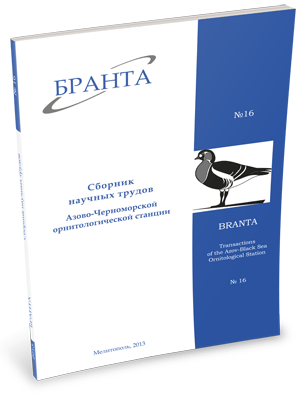
Transactions
of the Azov-Black Sea Ornithological Station



Changes in species composition, phenology and distribution of wintering waders in the Azov-Black Sea Region, Ukraine during thelast 50 years
E. A. Diadicheva, M. E. Zhmud
The changes in species composition and phenology of wintering waders are analyzed in key areas of the Azov-Black Sea Region of Ukraine for the last 50 years, based on author's own data and published winter bird censuses. In recent decades, an increase in species diversity of waders that occur in winter on the Azov-Black Sea coast of Ukraine was observed (from 10 to 32 species for the past 50 years), as well as an increase in the length of their stay in the region, number of wintering areas and the expansion of their winter distribution. In this case, it is clearly seen a promoting of new wintering species in the Ukrainian sector of the Azov-Black Sea coast from the west to the east. There is a significant effect of weather and climate conditions in the December-January period on the species composition of wintering waders, wintering regularity, numbers and duration of stay in the region of some wintering species. The highest rates of species diversity and numbers of wintering waders were in years with positive monthly average temperatures at the same time in December and January. Considering the steady trend of gradually increasing the average temperature in December in the last decade, combined with the high average temperature in January in some years, the changes noted on the wintering grounds related to climate warming.
Read the paper in a PDF file